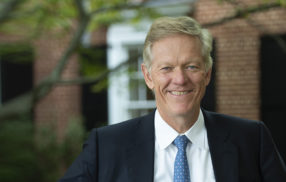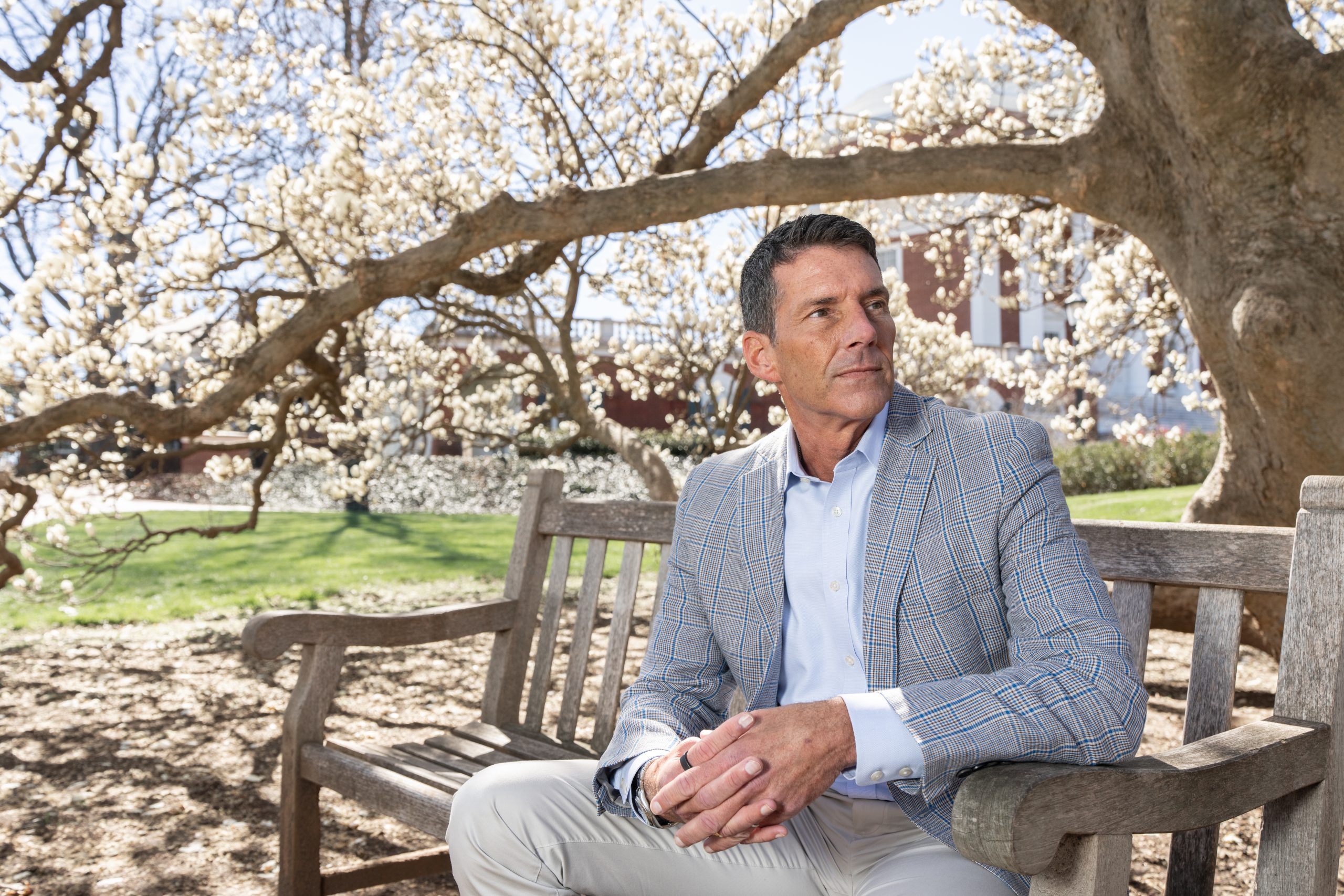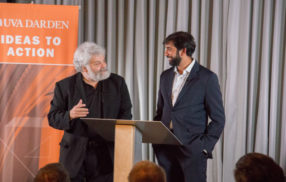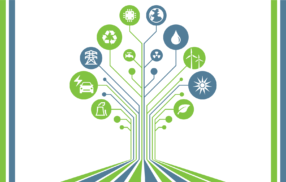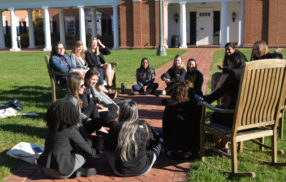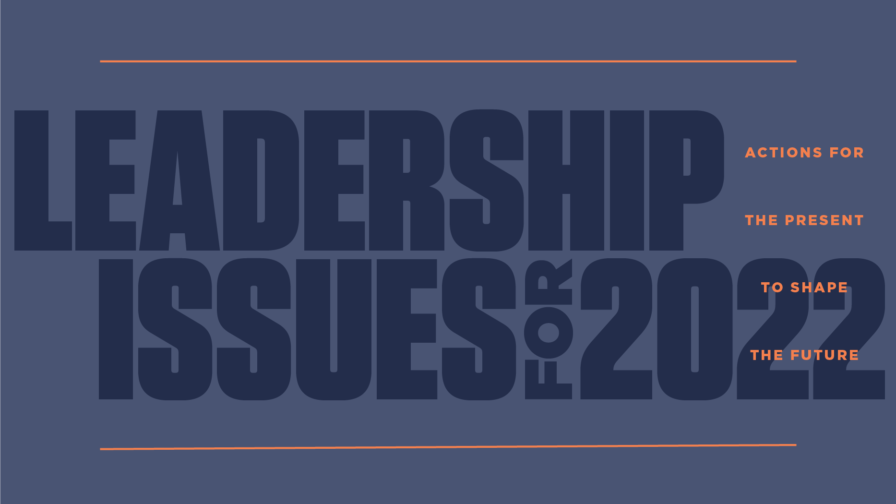
7 Leadership Issues for 2022: Actions for the Present to Shape the Future
By Darden Executive Education & Lifelong Learning
The world has seen profound changes in almost every facet of business and society in just the past year alone, and the change is ongoing. Though it’s taken center stage — with good reason
— the pandemic isn’t the only urgent issue facing humanity. In a torrent of contemporary challenges, COVID-19 accelerated some changes that were inevitable, brought the need for others into stark focus and served as a backdrop for the constant flux of an evolving world.
The business community has a starring role to play in every major issue of our time, and the opportunities and risks in each are significant. Strong leadership will be essential as companies learn from the past, confront urgent issues and plan for the future. Here, University of Virginia Darden School of Business professors consider seven key issues leaders need to be addressing — right now, in 2022.
Responsible Capitalism
In recent years, many companies have been jettisoning the shareholder primacy model and have instead been embracing the stakeholder model of capitalism, in which they seek to create value for all stakeholders, including employees, customers, suppliers and wider society, while delivering financial returns to shareholders.
Yet while those recent years saw more interest in responsible capitalism than ever before, those promises on stakeholder value are now being put to the test as the COVID-19 pandemic scars economies across the globe.
Professor Bobby Parmar sees the current mixture of tensions as the acid test for companies’ commitment to the stakeholder model. Those tensions include matters of health and safety, the stresses that accompany pandemic life, and issues of justice and equality, all of which touch the workforce and the workplace — even a virtual one.
Some businesses see this moment in time as a chance not just to rebuild the economy after coronavirus but to build it back better and greener than before. “It is a fantastic opportunity,” says Parmar. “Companies that can use this energy will be in a great position to move forward.”
The first step is to unearth a firm’s wider purpose beyond profits, he explains, and then embody those values authentically in terms of processes and products or services.
Leaders of companies are being called upon to address issues far beyond the confines of the corporate world and step into society’s thorniest debates, from immigration to LGBTQ rights. Will leaders of business take the improbable opportunity handed to them to make a positive impact on the world?
“Ultimately, each of these large institutions of society, government and business has to do its part,” says Parmar. “No one institution can make up for another institution that isn’t pulling its weight. While business is feeling some of that pressure, it has to be a collective effort if we are to deliver on the promises of stakeholder capitalism.”
Supply Chain Resiliency
The COVID-19 crisis exposed the fragility of global supply chains. The pandemic meant halts and delays to manufacturing and transport, closed borders, heightened geopolitical tensions and workers stuck at home.
Companies have for decades chased the holy grail of ever greater efficiency, sacrificing resilience and robustness. Professor Doug Thomas argues that executives’ focus must shift to a renewed commitment to resiliency. “Intentional action led to historical cost efficiencies as well as the vulnerabilities that are being exposed by COVID-19,” he says.
Take the shortage of computer chips that car plants rely on to make infotainment systems, power steering and brakes. The chip crisis forced automakers to cut production and is expected to cost the global industry $110 billion, laying bare the danger of relying on “just-in-time” production.
One response to vulnerabilities has been to source from more suppliers internationally in order to mitigate supply chain risk. Thomas sees merit in this method, but he cautions that diversification could be prohibitively expensive for companies, especially in complex industries like auto-making.
Another approach to overcoming vulnerabilities has been to bring production back home, something that politicians are pushing for.
An additional aspect of supply chains for corporations to consider is due diligence when it comes to suppliers, especially into their ESG standards. Even if selecting suppliers based on ethical considerations raises prices in the short term, Thomas sees sustainable sourcing as a competitive advantage.
There is a wider societal consideration when it comes to thinking about supply chains. Thomas points out that freer cross-border flows of people along with goods, capital and information have lifted many hundreds of millions of people out of poverty. Yet globalization has meant stagnant wages and worsening inequality for many. A mixture of global and local production seems the most likely way for companies to reap the benefits of the best of both worlds.
Climate Action
The issue of climate change has come into sharp focus since the United Nations-led Paris Agreement of 2015, which roused multilateral action to limit the average rise in global temperatures to 2 degrees Celsius above pre-industrial levels.
The Paris target has been adopted by most nations and, in recent years, the pace of action has accelerated sharply. Achieving a net-zero carbon emissions future is a massive challenge, and will only be possible with help from business, says Professor Mike Lenox.
He says the commercial sector is the engine of innovation that will invent the technologies that bring down emissions, citing electric cars, renewable energy, green cement and sustainable agriculture.
“There are huge opportunities either for incumbent companies or entrepreneurs to innovate new tech that can lead the march to a clean future,” Lenox says.
Lenox calls on companies to commit to targets such as sourcing renewable energy and electrifying their vehicle fleets. If companies don’t voluntarily move toward net-zero targets, regulators are likely to force their hands, potentially through carbon pricing, using market mechanisms to discourage behaviors that lead to carbon emissions — which could wipe significant value from corporations. Companies who don’t pursue a net-zero goal also risk reputational harm and reduced access to the capital markets, Lenox points out.
Leadership Kindness
A series of cascading crises in global health, employment, social justice and political divisions has laid bare for many leaders just how porous the lines between life and work really are. On a very large scale, this has been a moment of truth for choosing to respond with “business as usual” or with leadership kindness.
“For many leaders I’ve listened to, the relatively sudden impact of the lockdown brought to the fore their awareness of our common humanity,” says Professor Lili Powell.
A challenge in any crisis is managing one’s own stress response and reactivity in order to see clearly and choose wisely, Powell says. Leading mindfully is very much about showing up with an optimal balance of grit and grace, in which “grit” represents the focus and determination that mindful practices foster and “grace” represents the calm and kindness that compassion practices foster.
Powell believes that the context for leadership has fundamentally shifted and that a “going back to normal” mindset would be a mistake. Instead, she sees the opportunity for defining a “next normal” during which leaders have a chance to intentionally craft a new blend of grit and grace in their own leadership skills repertoire, one that fits the new and evolving circumstances.
Training in mindfulness and compassion outside of critical moments can help build the experiential inner work muscles to notice, shift and respond more mindfully and compassionately in the moment. “Compassion is a skill, one that individuals can cultivate in themselves, and it can be baked into organizations,” Powell points out. She advises leaders to grow compassion as a competitive advantage that improves a number of measures, such as employees’ sense of psychological safety and trust, which translate into reduced levels of burnout, error and turnover as well as increased levels of productivity, creativity and innovation.
Rise of the Machines
Machine learning is permeating the business world, and all companies need to be nimble and adapt to new customer standards of delivery and delight. These days, consumers expect companies to make their lives easier by understanding, predicting and delivering preferences they might not even know they have.
“To survive, companies need a customer-centric, strategic plan for how to deliver a unique buying experience to every customer at every juncture of their buying journey — and do it at scale,” says Professor Raj Venkatesan. “Machine learning offers a variety of sophisticated tools that produce deeper customer insights much faster than any group of humans could achieve.”
While consumer expectation and business strategy have changed the way the workforce delivers goods and services through technology, the other side of the coin is that machine learning and AI are changing what is needed from the workforce itself.
“We’re likely to offer the same types of services with fewer human employees in the future,” predicts Professor Anton Korinek.
The risk of lost jobs is not limited to lower-paid positions. Middle management positions in data-driven, white-collar sectors of the economy — such as finance, accounting, law and information technology — are especially susceptible to more sophisticated automation.
The jobs that are currently under less threat of automation are those that require uniquely human “soft skills” like planning, people management and strategic decision-making. Roles that require human traits like empathy, creativity and motivation are the ones that provide an opportunity to reshape the future of work for now.
In the short term, Korinek says it would be helpful for companies to invest in training programs to reskill workers for the jobs AI is creating. “Retraining certainly makes a lot of sense and will help a significant fraction of the workers who have been displaced, but it won’t be a panacea.”
A Hybrid Workforce
The coronavirus ignited a permanent shift in working practices, with many corporations now planning for a hybrid approach that sees employees split their work hours between home and the office in the longer term. That means workplaces will probably shrink and become destinations for collaboration, innovation, networking, coaching and socializing.
But there are risks that come with hybrid working, says Professor Lynn Isabella. Potentially, teams and processes could disintegrate as workers set their own schedules. And in some cases, two-tier workforces may form, with remote workers left out of decision-making and informal water-cooler conversations.
Complete freedom is counterproductive, argues Isabella, who advocates instead for some degree of harmony as the office becomes more about collaboration than focused work. “Rather than setting any old schedule indiscriminately, there needs to be some thought given to ‘community hours’ when everyone is together, so you can have those kinds of interpersonal connections and managers can ensure accountability,” she says.
The design of office space is also going to have to change to accommodate hybrid work. Pre-pandemic, Isabella says the trend was open-plan offices for individual work and meeting rooms for collaboration. That design is likely to reverse as employees use open offices for collaboration and those responsible for individual outputs use private spaces when it’s time for focused work.
“If we want people to collaborate with one another, we need to put them near each other,” says Isabella.
The onus will be on managers to make it all work. “In a hybrid workforce, leaders become more like coaches and facilitators than command-and-control generals,” she says. “That shift has already started. The focus now is on making sure people feel psychologically safe and that we appreciate all members of the organization, independent of where they come from and where they are.”
Diverse Leadership
Many companies have taken to the public stage to proclaim their stance on issues of racial equity and justice in recent years. Professor Martin Davidson, however, urges business leaders to address inequalities in their own institutions first before straying into public issues.
Some of the world’s biggest companies have set hiring and promotion targets, and they have also been forthcoming with their workforce data, reporting detailed demographic information that has highlighted the lack of diversity among senior officials and managers. Yet other companies have resisted such disclosures, raising concerns over their lack of transparency.
“It’s clear now the best thing companies can do is create systems and structures that put in place people and resources to do the work, and also hold people accountable for getting the job done,” says Davidson.
The state of women at work has been among the unexpected consequences of the COVID-19 pandemic. As of February 2021, women’s participation in the U.S. workforce was at 57 percent — the lowest it had been since 1988.
“If women are experiencing greater levels of responsibility for their families, their interest in remote and more flexible work is very high,” says Professor Vivian Riefberg. “The question for management going forward is going to be: What do I offer, how do I manage it, and what do I think about going forward?”
To increase diversity through hiring, companies need to start with a diverse pool of candidates when interviewing, including recruiting outside of the “standard” go-to places, Professor Carolyn Miles, former CEO of Save the Children, says. Building on that, current leaders need to identify diverse high-potential team members and ensure they have opportunities to develop and move up.
“There’s not a lot of magic to it. It’s intentionality and thinking it through,” Miles says. “You also have to continually talk to people inside the organization in lots of different forums.”
Mentorship, allies and sponsorship are also critical. “It’s one thing to say, ‘I want to help.’ It’s another to actually take overt actions to help people,” Riefberg says.
These insights were excerpted from the Darden Executive Education & Lifelong Learning white paper “Acting in the Present, Shaping the Future.” Learn more and download the paper today.
The University of Virginia Darden School of Business prepares responsible global leaders through unparalleled transformational learning experiences. Darden’s graduate degree programs (MBA, MSBA and Ph.D.) and Executive Education & Lifelong Learning programs offered by the Darden School Foundation set the stage for a lifetime of career advancement and impact. Darden’s top-ranked faculty, renowned for teaching excellence, inspires and shapes modern business leadership worldwide through research, thought leadership and business publishing. Darden has Grounds in Charlottesville, Virginia, and the Washington, D.C., area and a global community that includes 18,000 alumni in 90 countries. Darden was established in 1955 at the University of Virginia, a top public university founded by Thomas Jefferson in 1819 in Charlottesville, Virginia.
Press Contact
Molly Mitchell
Associate Director of Content Marketing and Social Media
Darden School of Business
University of Virginia
MitchellM@darden.virginia.edu




